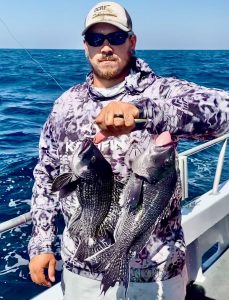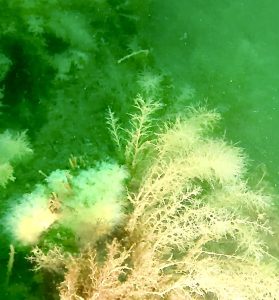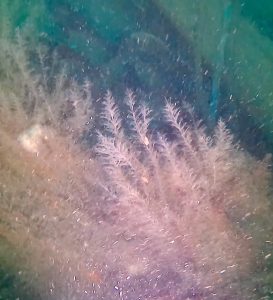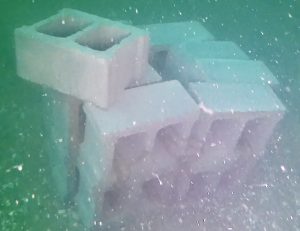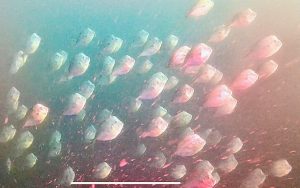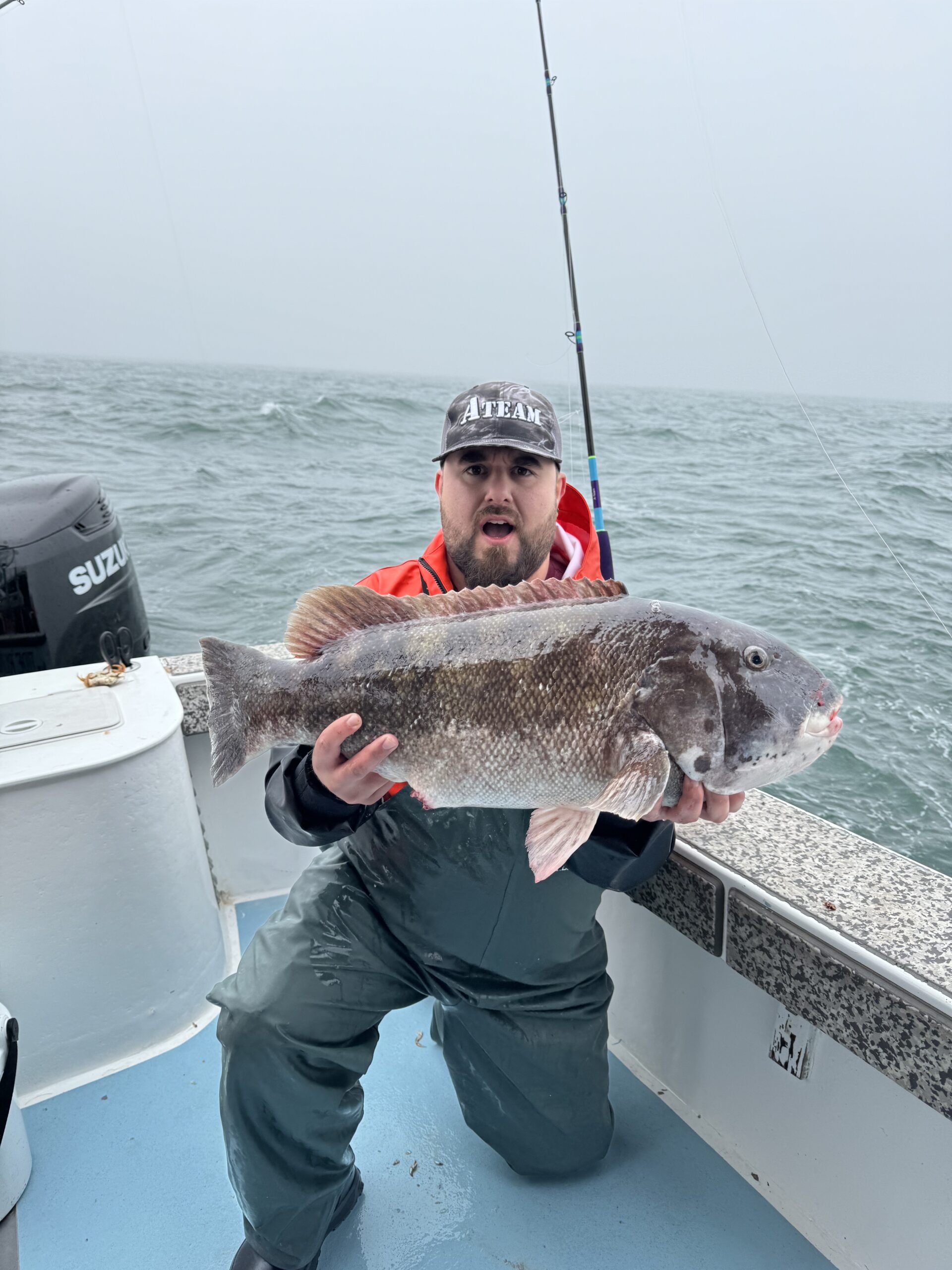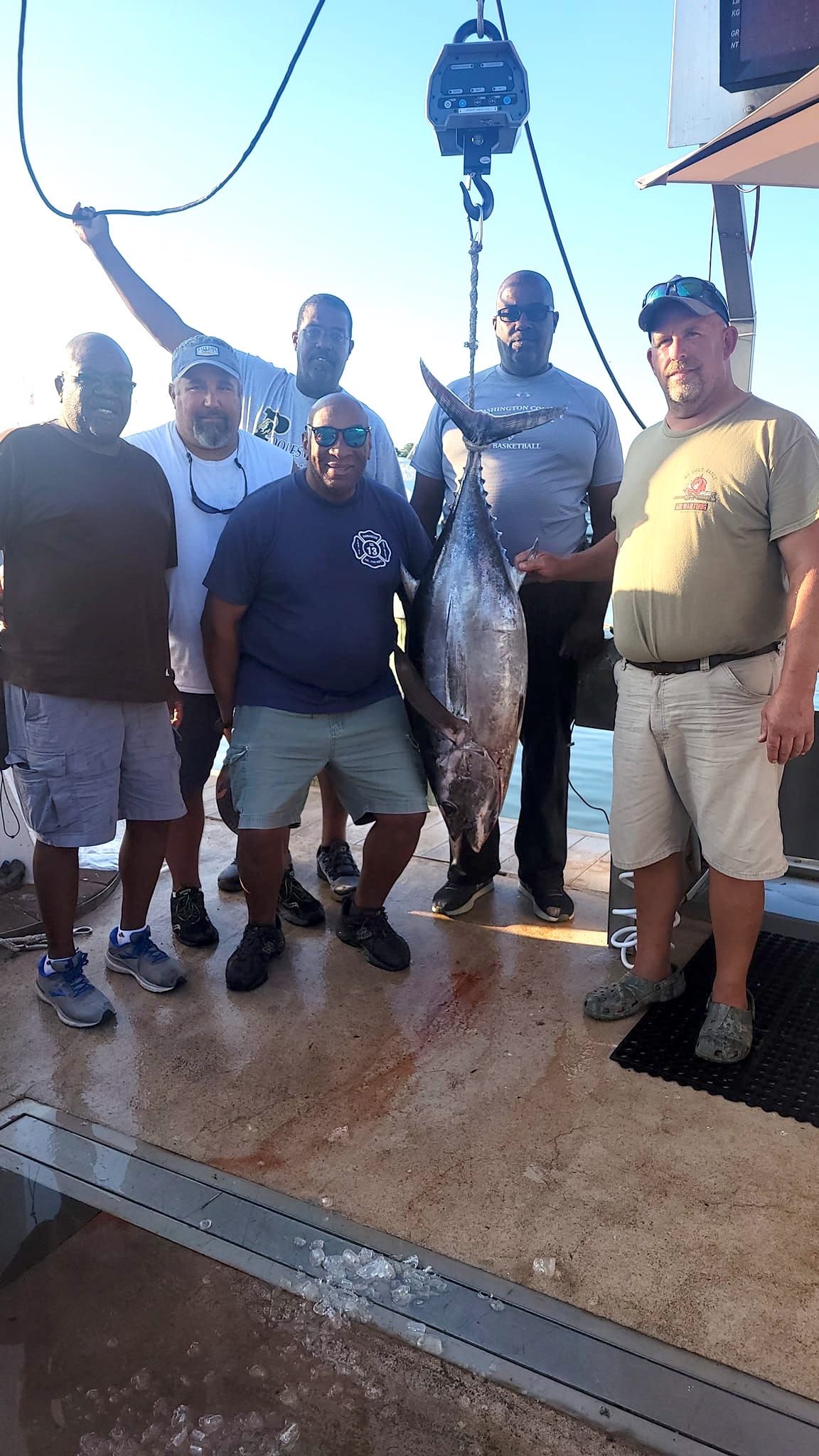
Posted on September 20th, 2022
Check out the Daily Catch at Sunset Marina!
Today was a beautiful day in and around Ocean City and we’ve got one more left before things turn south for a day or two. We’re looking at rain and wind Thursday followed by more wind on Friday and then things might shape up for the weekend. Stand by.
There will most likely be a new Maryland State Record for longfin albacore (Thunnus alalunga) when MD DNR confirms the catch. Today Captain Ryan Knapp and his crew on the private boat Top Dog fishing out of Sunset Marina landed a HUGE longfin while fishing the 800 squared off in the deep. The big tuna ate a naked ballyhoo on a “dink” rod and weighed in at a whopping 78 pounds. This beats the old MD State Record set back in 2004 by 4 pounds and is just one pound shy of the all tackle world record. Congratulations to Captain Ryan and crew!! Thanks to Sunset Marina and Hooked on OC for the pics!
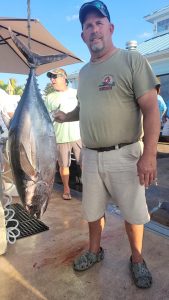
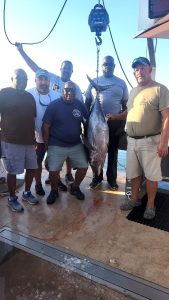
This group had a great day of inshore trolling with the Ocean City Girl when they landed a pile of Spanish Mackerel.
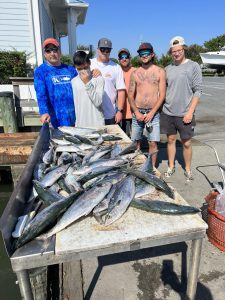
The Tortuga fishing out of Bahia Marina had a good afternoon trip with some keeper flounder and a surprise tautog.
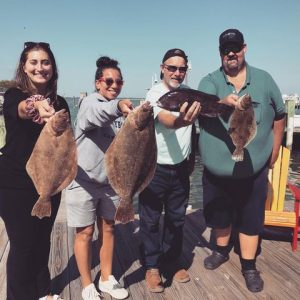
Big Bird Cropper and Shawn Flaherty fished the south jetty and route 50 bridge and had an 18.5″ sheepshead and a big bluefish.
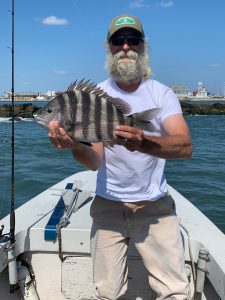
Captain Monty Hawkins of the Morning Star had a sea bass and serach mission on today’s trip.
I thought the weatherman said it would be calm.. Oyyyyy! A swell from three directions and especially south? Unpleasant.
No matter. There were no clients to apologize too. Just Vic, Brian & I aboard doing some habitat work. (All work and no play… So we caught a limit of sea bass too. I have two spots open on a long mahi trip tomorrow. Will likely be the last given the weather forecast. Anna’s reservation line will soon be shut. Just email me at [email protected] if you’d like to go..)
Biggest reason I went on a habitat video trip today was a sighting of fish a few days ago..
Exactly 20 years ago I lost 3 large areas of sea bass bottom/habitat to local trawlers targeting summer flounder with then newly loosened regulations. They were all good men doing what generations before them had done. Virtually all MD’s commercial permits are being used up north now. Some is saved for Thanksgiving time here too.. We’ve not had a gear impact to any habitat here in 10 or 12 years that I’m aware of.
But especially irritating? These weren’t ‘hardbottom’ patches of reef habitat; they were tube worm colonies. When you’d drop a sinker in it, it was as if landing on a down pillow. I never filmed any of them – any tube worms. I booked many days out – no fishing when I could easily have had sales – exactly as I did today – to go video corals with a $300 dollar drop camera and a WalMart TV. We knew NOTHING of it coming into the 2000s. Rudy Luchachovic was with me doing ponar grab samples the first time I dropped a camera down. It was breathtaking. Our whips looked as beautiful to me as any Caribbean reef.. Coral crazy — I didn’t video tubeworms.
Many, many times I’ve checked back at those locations since they were shaved off and found no growth, no fish.
Just in the last week, however, I came across two of the old places and saw magnificent stands of sea bass some 20+ feet off the bottom.
Something must have grown back.
Looked to be a gorgeous day Tuesday. (9/20/22 – today as I write) Water clarity was fabulous in the days before.
I made plans.
We all know what happens to plans..
Dang it.
Weather was marginal and visibility awful. We made it work anyway.
First stop was a new reef we’re working on, Rambler Reef. I might have six of our daily drops on it now? Seven? We found fish amid the smattering of block units and such. Even watched a sea bass going inside a block unit. I knew they must – now I’ve observed it. We also found a school of moonfish (lookdowns) off the bottom a bit. First for that too!
Pulled anchor and headed for spot number two – here where there’d once been the previously mentioned “soft bottom reef” of tubeworms.
Although sea bass have indeed recolonized the area, I still couldn’t tell you why. There appeared to be a clay substrate with perhaps some ledges. Visibility here was the pits. Still, our temperate reef fish love a ledge – getting under one. There may be reef growth there as well. Vis truly was for nothing.
Something has to be different now, that’s a fact. I’ve checked on that place ever since I lost it. Trawl skippers were complaining vehemently of “spaghetti mud” jamming their nets up the day I saw them fishing it decades ago. That’s what they call tubeworms. Used to be able to fish 85 people on the OC Princess out of Shantytown there. Whack sea bass when there no creel limit and only our self-imposed size limit. Caught a LOT of fish there.
Then none.
For a long time – zero.
I had expected tubeworms in profusion. What else would grow there? If hardbottom I’d have anticipated a fine recolonization of growth after 6 years or so. Found none after 19 years.
Right smart of sea bass though, even if nowhere near populations of times past.
My last stop was a fair piece off. I often go on about water quality and how it’s decline has pushed bluewater species off our shelf waters to canyons and beyond.
Well, something else needs clear waters too. Sunlight – so it can reach our corals.
I’ve long noted nearshore reefs will only have sea whip (grows in beautiful orange, grass-like meadows) and star coral (our only hard coral) where sun can get to it. Go beneath a shelf loaded with coral? .. inside a barge? You’ll find many growths and especially mussels – – but if there’s no sunlight? There’s no coral.
So today I went to a very old piece of bottom – you could call it ‘accidental reef’ or perhaps even ‘calamitous reef’ where a large boat/small ship had sunk decades ago (a century?)
In 145 feet of water we found huge bryzoa and other growths – but no sea whip.
Question now is ‘Did we used to have whip in 145 feet?’ Have we lost that habitat owing the Mid-Atlantic’s greening sea? Can sunlight no longer penetrate as deeply?
I’ll work my way inshore – I did this sampling years ago but have forgotten. “Where do we have enough sunlight reaching bottom to sustain a coral loaded with zooxanthellae?” We, officially of course, know nothing of sea whip’s relationship with zooxanthellae. To NOAA it’s a “non-reef building” gorgonian coral of no import. I’d think they’re at the top of a list for our region’s EFH – Essential Fish Habitat. Thankfully Australia thinks they’re worthy of study – they found the bright orange and occasional purple in whips to be associated with vast populations of zooxanthellae. And from zooxanthellae coral behave (sort of!) as plants – converting sunlight into food. (Please don’t ask me – it’s way over my head. The Google knows all though! Use Google Scholar if you really want a deep dive..)
Where is today’s sunlight line – the line beyond which no whip will grow? Is it 125 feet? 130? 135??
Will it improve—will whips grow in even deeper waters as oyster restoration efforts continue to gain ground and our region’s waters again turn blue at ten fathoms and not 100…
NOAA has equipment incredibly far beyond my go pro cameras and Chinese knock offs.
I’ve never been able to get them interested.
Well, one fellow. But his work was contrary to what BOEM wanted folks to read.
When a 50 million dollar NOAA research boat was off our coast in 2007 they found “sand waves” where I said there was reef. When I took 13 scientists and regulators to that exact spot we saw reef. That was 120 feet and whip was well in evidence..
When I said wind power survey noise was driving sea bass away from every reef within 525 square miles in 2013/14/15, BOEM said ‘Naaawww – Impossible!’
Strangely, when a newly outfitted boat was working off our coast in the same region in 2020/21, it had no affect on fish. They’d eliminated the frequency that somehow alarmed fish.
Another boat with the same old gear? Yeah, it put sea bass off the feed from at least 7 miles away. But nobody wants to go against the behemoth of BOEM.
Perhaps we’re at last done with surveying for a while.
In the 1960s/early 70s we lost 4.5 square miles of sea whip meadows to surfclam fishing (HoJos clam fritter sandwich anyone?!?) As I held a sample at a meeting, a trawl skipper of the era told me, “Monty, we used to dig through mountains of that stuff to get to our fish.”
That’s just in one place. One reef.
No one anywhere in .guv marineland is working on a Mid-Atlantic marine habitat restoration plan.
Nobody.
It’s not even a whisper in a hallway.
At least they are making progress—significant progress, with oyster restorations.
That will help out front. Not just for restoring marlin, mahi and tuna to old time feeding grounds; but now too you can see a benthic/benthic coupling where oysters in their role as biofilters will allow sea whips to colonize deeper bottoms..
One day.
Tomorrow?
Fishing!
Oyyyyy.. then a lot of bad weather it looks like.
Cheers
Monty
